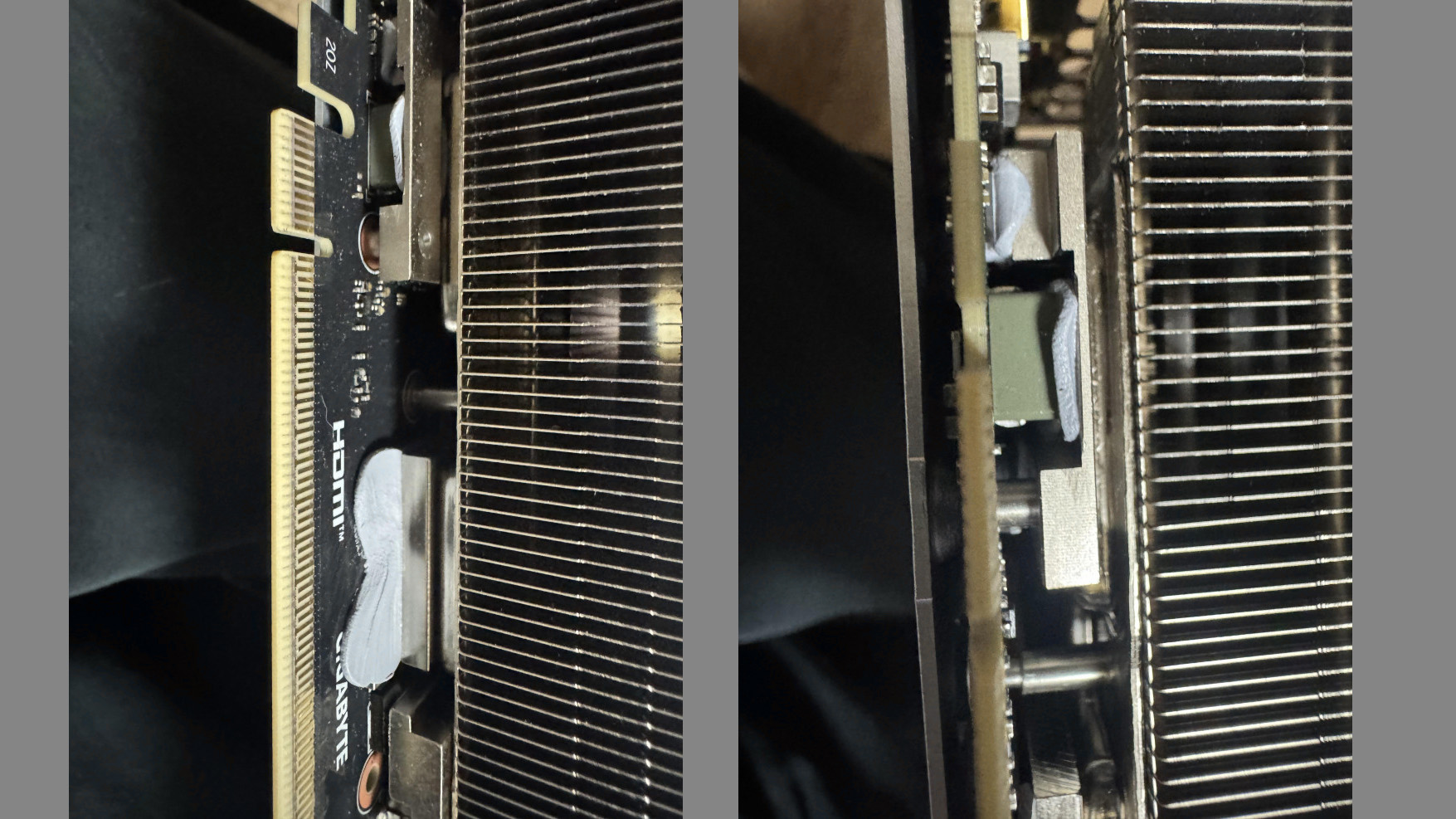Gigabyte addresses RTX 50-series thermal gel leak, blames over-application in early production units
The leaked thermal gel should not affect the overall performance

Gigabyte has acknowledged the recently reported thermal gel leakage issue plaguing its latest RTX 50-series graphics cards. The company’s official response comes just a few days after a forum post on the Korean PC hardware community Quasar Zone showed thermal gel seeping from a recently purchased RTX 5080 card. Additionally, it was found that the issue was not limited to a particular model but nearly the entire lineup of RTX 50-series graphics cards from Gigabyte.
In its response, Gigabyte says that its Nvidia RTX 50 series and AMD Radeon RX 9000 series GPUs utilize a specially engineered thermal conductive gel instead of traditional thermal pads. As per the company, this material is designed to provide better contact across uneven component surfaces and is applied using fully automated machinery to reduce human error.
The thermal conductivity gel solution is also said to have undergone rigorous testing and validation, including drop tests, thermal simulations under extreme conditions, and usage in both vertical and horizontal GPU orientations. That last bit is important, as the original author of the post mentioned using their Gigabyte graphics card with a riser kit in a vertical orientation.
The company explains that the thermal gel is an insulating, deformable, putty-like compound capable of withstanding temperatures up to 150°C without melting. However, Gigabyte admitted that some early production batches may have received an over-application of the gel, which could explain the visible leakage observed by users. While the company acknowledges the cosmetic irregularity, it emphasizes that the issue does not compromise performance, stability, or product lifespan.
Gigabyte also says it has since adjusted the gel application volume in newer production runs to prevent similar leakage in future shipments. Notably, the company has not announced any recall or replacement program, which isn’t surprising considering the massive demand and limited supply of GPUs. Affected users are encouraged to contact regional Gigabyte customer service centers for further support.
While it is reassuring to see Gigabyte taking swift action with its response, one cannot simply overlook the incident. For most users, spending thousands of dollars on a high-end GPU comes with the expectation of flawless performance and build quality. Discovering a defect, even if cosmetic or non-critical, can shake consumer confidence, especially when it involves premium hardware.
Follow Tom's Hardware on Google News to get our up-to-date news, analysis, and reviews in your feeds. Make sure to click the Follow button.
Get Tom's Hardware's best news and in-depth reviews, straight to your inbox.

Kunal Khullar is a contributing writer at Tom’s Hardware. He is a long time technology journalist and reviewer specializing in PC components and peripherals, and welcomes any and every question around building a PC.
-
Heat_Fan89 No surprise to read this. Most of these stories turn out to be overblown. Going back to the missing ROP's, Nvidia said it was a small batch that were affected. That seems to be the case as most of the Amazon and Newegg reviews indicate that missing ROP's are not a problem. I have no missing ROP's on my ASUS TUF 5080. That's why the Igor Labs hotspot findings got overblown. Sure it may affect some AIB's from low end makers but not every RTX 5 series is going to give up the ghost in 2-3 years.Reply -
hotaru251 Replyand is applied using fully automated machinery to reduce human error.
lets replace human error w/ machine error :|
also not like alternatives to thermal pads havent existed.
Putty has been a thign for many yrs now.
you could also just use thermal phase chang pad instead ala the PTM7950 -
Notton yeah, over applicationReply
It's not machine error, it's a human that has to adjust the machine settings to ensure it doesn't overflow due to differences in calculated amount vs. actually needed.hotaru251 said:lets replace human error w/ machine error
Also PTM7950 is designed for chips, not VRMs with poor tolerances in mounting height.
For RAM and VRM, you want a thermal pad or putty. -
Alex/AT Reply
Then let's tell it's not machine error but a way of AI thinking.hotaru251 said:lets replace human error w/ machine error :|
And all's fine.
/this is fine png/ -
YSCCC To be fair I can understand it can appear to be excessive thermal putty if over applied. But with it dripping out onto the motherboard I am thinking either they are using cheap putty with bad consistency so it will be susceptable to pumping out or that the "hotspot" of the VRMs as demoed in Igor's lab article is a real issue that it started to make the putty very liquidReply